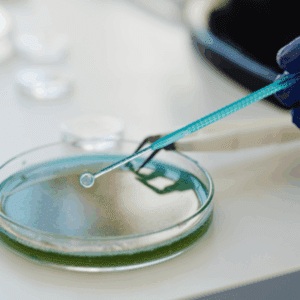How is myelodysplastic syndrome (MDS) treated? Dr. Abhay Singh from Cleveland Clinic explains how MDS therapies are chosen based on risk assessment and genetic profile, reviews treatments for managing anemia, and discusses where targeted therapies play a role in MDS care.
Dr. Abhay Singh is a physician specializing in acute and chronic leukemias at Cleveland Clinic and serves as Assistant Professor of Medicine at the Lerner College of Medicine of Case Western Reserve University. Learn more about Dr. Singh.
Related Resources
Transcript
Jamie Forward:
Let’s talk about therapy. So, what are the available treatment approaches for MDS?
Dr. Abhay Singh:
Yes. So, I think the first and foremost thing, as we discussed, is securing the diagnosis because it can be a challenging one.
So, making sure that we have the right diagnosis in place. And once that diagnosis has been established, there are risk scoring systems that are in place. One is called IPSS-R, International Prognostic Scoring System. R is for revised. And then, there’s another one, IPSS-M, International Prognostic Scoring System, molecular, which incorporates molecular information as well.
So, based on those risk scores, your MDS doctor will discuss with you where the risk stratification is. It’s either low risk, in broader terms, it’s low risk, intermediate risk, and high risk.
And low intermediate risk, MDS is treated in a different way than high-risk MDS. In low risk MDS, usually the issues are cytopenia, which can be cyto, is another fancy way of calling cells and penia is less, so less of cells.
So, it can be less of some of the cell lines. If you have less red blood cells, then you have anemia.
So, your treatment is focused on anemia and drugs such as erythropoietin stimulating agents, which stimulate the marrow to produce more red blood cells is one potential treatment.
Another treatment that has shown in several trials recently, most recently the COMMANDS study that showed that luspatercept (Reblozyl) is a great drug for anemia as well.
And then moving on, we have other treatment options such as imetelstat (Rytelo).
If there is a specific molecular alteration or chromosomal alteration called deletion 5q, then there’s a drug called lenalidomide (Revlimid) that can be used in low-risk disease.
Then moving on, if there’s a thrombocytopenia, there are drugs available that can stimulate the marrow to produce more platelets. These can be TPO mimetics, thrombopoietin mimetics, or a deep thrombopoietin receptor agonist, L-thrombopenia or romiplostim.
And then, we don’t have any neutrophil specific therapies. But oftentimes what we’ll see is that neutropenia is commonly associated with a particular kind of genomic alteration called the IDH1 mutation. And we have approval in second line for a targeted therapy such as ivosidenib (Tibsovo) for the treatment of IDH1 mutated MDS.
Then, there is high-risk MDS, wherein a lot of studies have come through, but one or two drugs that have always stayed for the last two decades are the hypomethylating agents, the azacitidine (Vidaza) and decitabine (Dacogen). In high-risk MDS, the disease is very different from the low-risk MDS.
So, you’re always thinking of allogeneic bone marrow transplantation in our high-risk patients if they meet the age criteria, and they are fit and robust to go through a bone marrow transplant.
We do not typically use bone marrow transplant in low-risk patient population because the risk and benefit ratio is not aligned. So, it ends up being more risky than being beneficial for our low-risk patients.
Jamie Forward:
Okay. And so, you’ve sort of been touching on molecular testing results, molecular markers, IDH1, etc. So, how can the results of these molecular tests impact treatment? So, it sounds like there’s targeted therapies. Is that correct?
Dr. Abhay Singh:
Yes, that is correct. So, I think it’s still early on, I would say, but I think having that information is useful. So, one example is SF3B1 is a common mutation in MDS, and luspatercept is the drug that was specifically available for patients with SF3B1 mutation. Now, it’s available broadly for all MDS patients based on the COMMAND data. Then, we have IDH1 and IDH2 mutations where there is ivosidenib, olutasidenib (Rezlidhia), and IDH2 inhibitor, itacitinib drug that’s available.
Oftentimes there can be an overlap between MDS and other kind of bone marrow disorders such as myeloproliferative neoplasm. In that case, we might have a JAK2 mutation or another proliferative mutation where there may be room to use JAK inhibitors. So, I think there’s a lot of information that can be gathered or harnessed from a molecular testing result that can help us with treatment decisions, if not in the first-line setting, in the second-line setting when other therapies might not be working.



